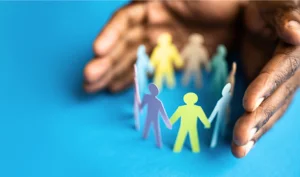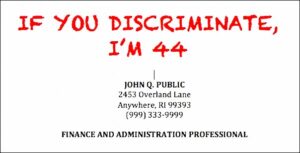
12 Ways to Ensure Inclusive Hiring for People With Disabilities
Imagine you discover an ideal job opportunity. You have the skills, drive, and vision to excel in this role. However, barriers invisible to others are

Imagine you discover an ideal job opportunity. You have the skills, drive, and vision to excel in this role. However, barriers invisible to others are

Are you disturbed by news about organizations backtracking on workplace diversity and inclusion commitments? I certainly am. For example, a recent Wall Street Journal article

In today’s diverse, dynamic work world, employers increasingly recognize the transformative power of diversity, equity, and inclusion. Still, concerns often arise about the cost of

Throughout my conversations with people in the world of work, I hear these questions every March — about the time we start celebrating Women’s history

As the spotlight has brightened on racism. In response to recent miscarriages of justice, the emphasis on identifying racism within other aspects of life has

A few years ago, we were asked to help a market leader that was intent on changing its culture to be more creative and innovative.

In this extrovert-biased world of ours, the squeaky wheel gets the grease. Many job candidates aren’t making it past the hiring process to get the

The events of the last few months have brought increased attention to the value that diversity, equity, and inclusion (DEI) bring to the workplace and

WorkTrends has been focusing on diversity and inclusion not as buzzwords, but as actions. Meghan invited Elena Joy Thurston to the podcast to share her

Steve Haffner is a professional speaker — but he’s also a mentalist, adept at taking advantage of the tricks our subconscious mind can play on

To be honest, I don’t talk about being a woman in business very much. I’m in a field that is filled with vibrant, brilliant, highly
“Half the world is Half the world was Half the world thinks While the other half does…” –Neil Peart (writer and musician, “Half the World”)

Age discrimination has no place at work — and yet it persists. Why? What should we do? The TalentCulture community speaks…

Do you want to lead others? Start by leaving behind age stereotypes that keep us all from getting ahead. Try these 5 steps

What can industry conferences teach us about how to overcome generational stereotypes in the workplace? The Recruiting Trends Social Summit reminded me this week that the TalentCulture community mantra is more than mere words. Together we ARE better…

What role does age really play in today’s workplace? One of our very own #TChat Ambassadors takes a tough look, and offers advice for young professionals…

Today’s workplace is no place for age-based stereotyping. And yet, negative stereotypes persist. How can we break free from these assumptions that threaten professional relationships and business performance?